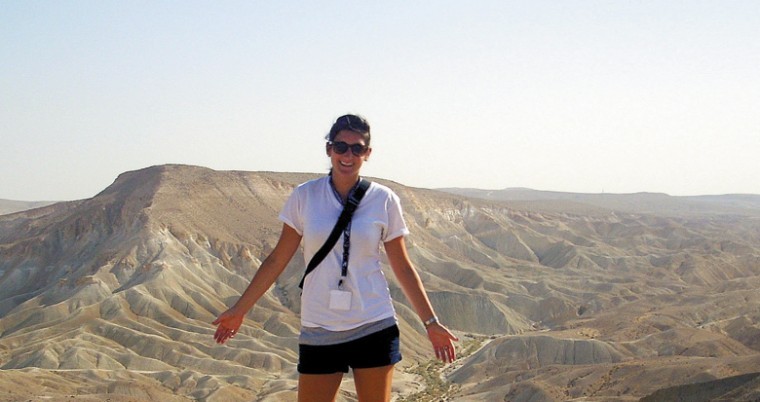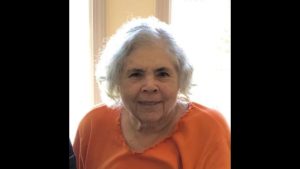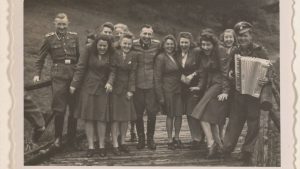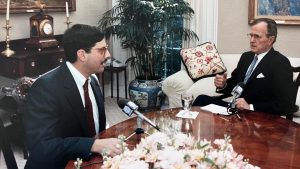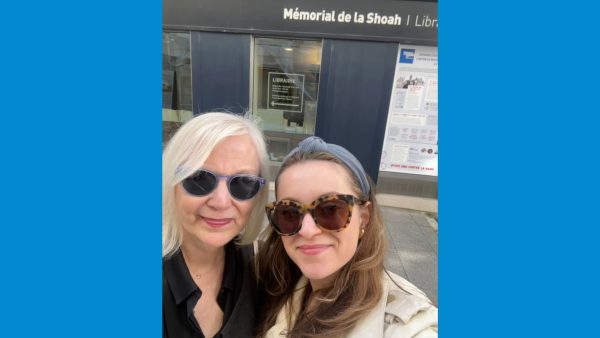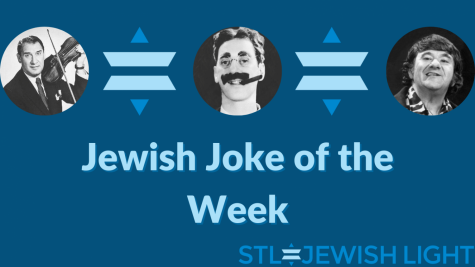Finding enduring connections to Judaism during holidays in Israel
Published November 9, 2011
I was sitting with my parents this summer at a nice restaurant in St. Louis – “nice” meaning we had all traded our jeans and flip-flops for more formal attire and were enjoying a bottle of wine that had been ordered from a separate wine menu.
As our plates were cleared and the bill was dropped, I found myself nervously scanning the premises for a toothpick. Having returned last spring from over five months in Israel, I’d become accustomed to picking away at my teeth at the table; this was normal in Israel. Regardless of the hefty price of the meal or the name of the chef, I had come to expect a pre-packaged hand wipe and a toothpick with my bill.
In Israel there exists a level of informality; events start at least 15 minutes after schedule (affectionately referred to as “Israeli Time”), meetings are shamelessly interrupted by cell phone conversations, business attire is nothing short of a stretch, and no one hesitates to pick their teeth in a restaurant.
I arrived in Tel Aviv last August on Masa Israel’s Oranim program to begin an internship with Tel Aviv University. There, I launched a program to unite all of the international students studying at TAU and provided an array of opportunities for them to meet local students and learn about Israeli culture. My experience living and working in Israel prompted both personal and professional growth, and Israel remains a central part of my life. Although I currently work for a Jewish organization, I struggle with my relationship to Judaism every day.
However, this relationship was something I only became comfortable with acknowledging during my time in Israel.
Growing up in a Reform Jewish family in St. Louis, I had previously associated Judaism with being dragged to synagogue each weekend only to culminate in my bat mitzvah, a day with which I felt uncomfortable and confused. Sure, I spent a couple of summers at Jewish camp, and gravitated towards the Jewish girls in my high school, but Judaism meant very little to me and our relationship came to a screeching halt after age 13.
Fast forward to my Taglit-Birthright Israel trip after college graduation; spending 10 days on a bus with a group of Jews and exploring a country that people kept referring to as “ours” left me with an incredible feeling of belonging that I had never quite experienced. With a mixture of curiosity and newfound passion and the desire for travel, I decided to move back to Israel hours after returning to America.
There were two specific Jewish experiences in Israel that brought me closer to my relationship with Judaism: Yom Kippur and Hanukkah. Previously, the High Holidays had emitted feelings of seclusion; a few of us were excused from school for the day, only to sit through a long service and endure “hunger.” Yom Kippur in Israel was one of the defining moments of my months abroad.
On the Friday of Yom Kippur in Israel, the country literally shut down. Tel Aviv, with its orchestra of car horns and bus exhaust and squeaking brakes, suddenly fell into silence. In preparation for the chag, or holiday, all businesses and roads were closed and would remain so until Saturday evening. The streets were filled with couples pushing baby strollers, dogs trotting alongside their owners, and children passing by on bikes and skateboards. The concrete reflected greens and reds as the traffic lights changed back and forth, regardless of the quiet streets.
As the sun began to set on Saturday, symbolizing the end of Shabbat and Yom Kippur, a few of us walked towards the beach to watch the sunset. Bikers pulled over to lean against the railing and groups of people sat in the grassy medians and on the sidewalks to watch the pink-orange sun set behind the ocean. I had not set foot in a synagogue, and yet I had never felt more connected to Judaism, nor had I ever taken so much time for reflection. There is something to be said about two days of quiet that in itself was more meaningful to me than any Yom Kippur of the past.
Similarly, Hanukkah in America had lacked in meaning for me; it was a time when I grew jealous of friends who celebrated Christmas. So as December approached in Israel, I couldn’t wait to see what Hanukkah would be without competition from Santa Claus; I was ready for a week filled with presents, decorations, holiday-themed candy, and everything else I had grown accustomed to seeing in the aisles of American stores.
Hanukkah arrived quietly and tastefully. There was no spray-painted frost in the windows or reindeer on the lawn. On the first day I began to notice small menorahs in store windows and tables of sufganiyot, or jelly donuts, at the front of the gelato shops.
By day five, I was loving every bit of the non-Hallmark holiday. Town squares across Tel Aviv held evening candle-lighting ceremonies with singing and dancing. Bakery windows were filled with trays and trays of sufganiyot and children walked home from school wearing construction-paper hats and Maccabee costumes – Hanukkah in Israel was all about gatherings.
My five months in Israel shaped my career and, in my opinion, positively shaped who I am and what I stand for. More importantly, I came back with the determination to work in the Jewish community and was hired to be the engagement associate at Penn State University’s Hillel. Living in a country surrounded by Jews means losing the momentum and necessity to be Jewish in practice. Judaism became a choice for me and I came to the realization that the most incredible part of Judaism is the space for struggle; I am now comfortable with the idea that my Judaism can be a struggle, and that this idea is inherently Jewish.
A St. Louis native, Kayla Kahn is an alumna of Masa Israel’s Oranim Internship Experience. She is currently Engagement Associate at Penn State Hillel.



